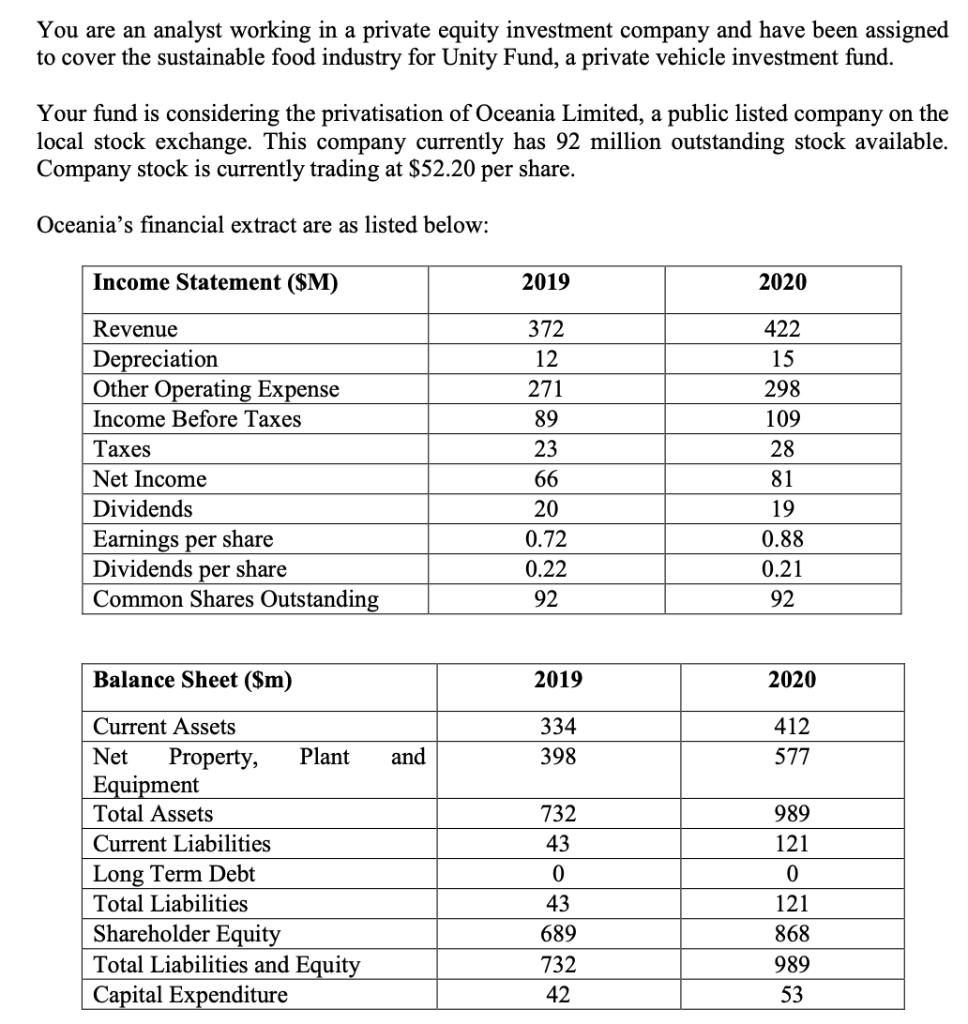Question
Your fund has an observed beta of 1.05 and a debt ratio of 40% with a cost of debt at 6.5%. Typically, your will issue

Your fund has an observed beta of 1.05 and a debt ratio of 40% with a cost of debt at 6.5%. Typically, your will issue fresh equity to raise capital to acquire new investment targets.
Dividends will grow at 20% in the next two years and will grow at a constant rate of 6% per year from Year 3 onwards. It is anticipated that the Depreciation, Earnings, Working Capital and Capital Expenditure will increase proportionately with Free Cash Flow to Equity (“FCFE”). You have been advised that the FCFE will grow at 20% per year for two years and at 8% per year thereafter.
Your research team has identified that the market risk premium is 6% while the risk-free rate is 4.5%. The Industry Beta is observed to be 1.3. You have requested for industry relative ratios for reference and they have provided you with the following:
Industry P/E 18
Industry P/S 5
Industry P/BV 4.5
1) You are required to assess the growth rate for Oceanic Limited and have been told that the company has gone into a stable growth phase. Appraise the method you will be using and compute the sustainable growth rate.
2) You have been asked to value the company by using the following methods:
(a) Dividend Model
(b) Free Cash Flow to Equity
You are an analyst working in a private equity investment company and have been assigned to cover the sustainable food industry for Unity Fund, a private vehicle investment fund. Your fund is considering the privatisation of Oceania Limited, a public listed company on the local stock exchange. This company currently has 92 million outstanding stock available. Company stock is currently trading at $52.20 per share. Oceania's financial extract are as listed below: Income Statement ($M) 2019 2020 Revenue 372 422 Depreciation Other Operating Expense 12 15 271 298 Income Before Taxes 89 109 xes 23 28 Net Income 66 81 Dividends 20 19 Earnings per share Dividends per share Common Shares Outstanding 0.72 0.88 0.22 0.21 92 92 Balance Sheet ($m) 2019 2020 Current Assets 334 412 Net Plant 398 577 Property, Equipment Total Assets and 732 989 Current Liabilities 43 121 Long Term Debt Total Liabilities Shareholder Equity Total Liabilities and Equity Capital Expenditure 43 121 689 868 732 989 42 53
Step by Step Solution
3.40 Rating (162 Votes )
There are 3 Steps involved in it
Step: 1
FCFE Is free cash flow from equity Formula for FCFE Earnings before in...
Get Instant Access to Expert-Tailored Solutions
See step-by-step solutions with expert insights and AI powered tools for academic success
Step: 2

Step: 3

Ace Your Homework with AI
Get the answers you need in no time with our AI-driven, step-by-step assistance
Get Started


